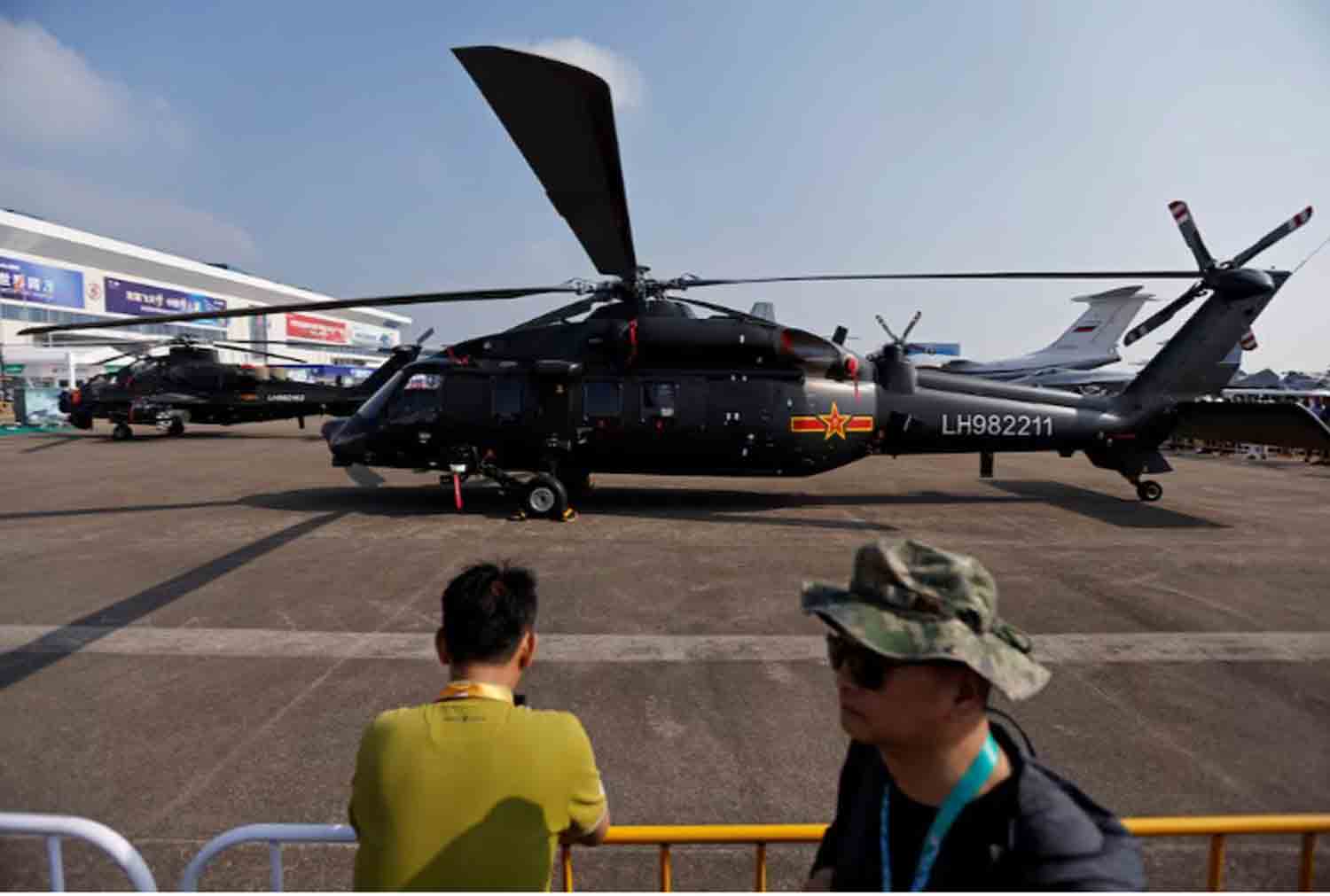The Chinese military’s advanced Z-20 helicopter, featuring a design reminiscent of the U.S. UH-60 Black Hawk, is poised to make a significant impact, particularly in maritime operations, as noted by analysts during its presentation at China’s largest air show in Zhuhai on Tuesday.
Experts are closely examining the Z-20’s potential to enhance the Chinese navy’s anti-submarine capabilities, addressing existing vulnerabilities. This interest comes as the helicopter has undergone a decade of development, drawing attention from regional defense attaches and security analysts.
Recent reports from state media have emphasized the introduction of the helicopter’s first armed assault variant, while the military unveiled the Z-20J armed naval version on Tuesday, marking a crucial advancement toward the development of a comprehensive anti-submarine platform, the Z-20F.
Despite China’s ongoing efforts to deploy increasingly sophisticated warships as part of its military modernization strategy, the nation faces challenges in protecting these assets, including its developing aircraft carrier fleet, from underwater threats—a capability that many of its adversaries have already mastered.
Pentagon assessments and insights from Western analysts have consistently highlighted that deficiencies in the anti-submarine capabilities of the People’s Liberation Army Navy (PLAN) could impede its ability to conduct extended naval operations during a conflict.
In its most recent public report on China’s military modernization, published in October 2023, the Pentagon indicated that a naval variant of the Z-20 is currently in development.
According to the Pentagon report, “The Z-20F is akin to the U.S. Navy’s SH-60 and will offer substantial enhancements in anti-submarine warfare (ASW) capabilities compared to the smaller helicopters presently in use by the PLAN.”
Collin Koh, a security expert based in Singapore, pointed out that the navy’s Z-8 and Z-9 helicopters are constrained by their weight classifications, which limits their operational compatibility with certain ships, as well as their range and the payload capacity for sensors and weapons.
These helicopters are also derived from European designs from the 1980s, acquired prior to the imposition of defense technology sanctions against Beijing following the Tiananmen Square incident in 1989.
Koh remarked, “The Z-20 is thus the solution.” He is affiliated with the S. Rajaratnam School of International Studies.
He indicated that he anticipates the Z-20 will soon establish itself as the standard helicopter for naval and anti-submarine operations, due to its capability to land on a variety of vessels, including corvettes, destroyers, and aircraft carriers.
In December 2022, the Taiwan navy’s academic journal, Navy Professional Journal, published an extensive article discussing the evolution of China’s anti-submarine helicopters, highlighting that certain features of the Z-20F surpass those of the U.S. MH-60R, manufactured by Sikorsky Aircraft, a subsidiary of Lockheed Martin.
“The introduction of the Z-20F into service will significantly enhance the operational range for anti-submarine missions conducted by destroyers and corvettes,” the article stated, noting that it would effectively double the range of the current fleet.
Contemporary anti-submarine strategies involve helicopters operating at considerable distances from their parent ships, utilizing various sensors to locate and track enemy submarines while coordinating with surface vessels and other aircraft. Most helicopters are equipped with lightweight armaments, such as depth charges and torpedoes, although other platforms are typically employed for direct attacks on submarines.
The display on Tuesday followed reports from state media in May indicating that the Z-20 has acquired assault capabilities, with anti-submarine variants currently under development, although no timeline was provided.
In its most recent annual evaluation of global military deployments, the International Institute for Strategic Studies, based in London, noted that China has deployed 15 Z-20 helicopters primarily for search and rescue operations.
Discover more from Defence Talks | Defense News Hub, Military Updates, Security Insights
Subscribe to get the latest posts sent to your email.





